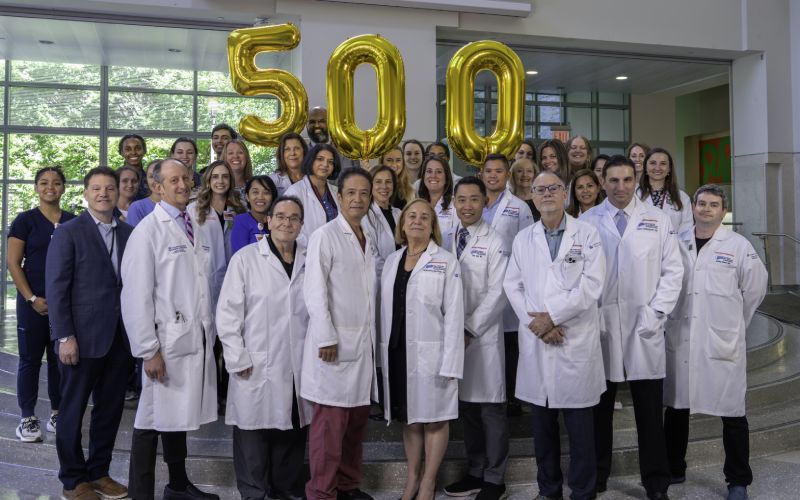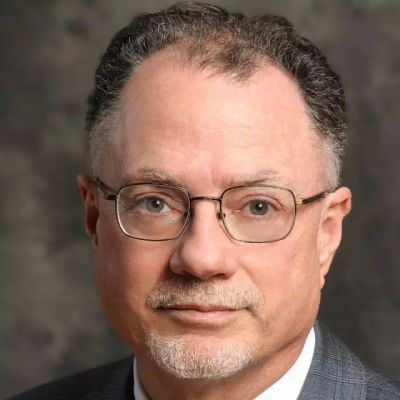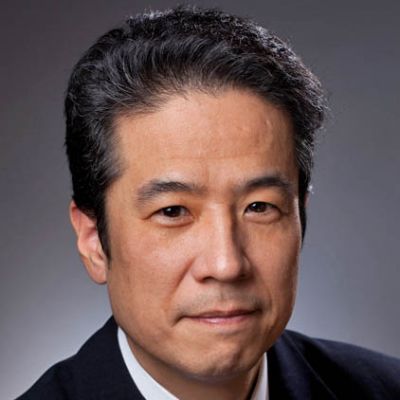The Center for Liver Disease and Transplantation, a comprehensive, multi-campus center built on a collaboration between NewYork-Presbyterian, Columbia, and Weill Cornell Medicine was founded over 25 years ago. In the decades since, it has become one of the largest and most successful liver transplant centers in the United States, ranking among the top five programs in the country for number of transplants performed.
Multidisciplinary experts in the Center for Liver Disease and Transplantation treat patients of all ages and with all types of conditions and recently achieved a major program milestone as surgeons performed the 500th pediatric liver transplant in October 2023. An accomplishment due to the unwavering commitment of the program’s physicians and surgeons who provide the highest level of quality care to children with advanced liver disease and tirelessly pioneer approaches to liver transplantation that extend survival and quality of life.

Staff from NewYork-Presbyterian/Columbia’s Center for Liver Disease and Transplantation celebrating the 500th pediatric liver transplant milestone
“This major milestone is the result of the talent and tireless dedication of our transplant surgeons and hepatologists who care for patients with a great deal of precision and attention to details,” says Jean Emond, MD, Founder of the Liver Transplantation Program at NewYork-Presbyterian/Columbia. “We are proud to stand among national leaders in volume and excellent outcomes, particularly among babies who undergo live donor liver transplant.”
This major milestone is the result of the talent and tireless dedication of our talented transplant surgeons and our superb hepatologists who care for patients with a great deal of precision and attention to details.
— Dr. Jean Emond
A legacy beginning with caring for the smallest patients
Treating pediatric patients at both NewYork-Presbyterian Morgan Stanley Children’s Hospital and NewYork-Presbyterian Komansky Children’s Hospital, the Center for Liver Disease and Transplantation was founded on the concept of cross-campus collaboration between two premier medical schools. “I was jointly recruited by Columbia and Weill Cornell Medicine in 1997 to spearhead the pediatric liver transplant program with the idea that it would be an integrated clinical program across both campuses,” explains Dr. Emond. “Today, the program is fully integrated, with a team of five transplant surgeons and seven hepatologists who travel back and forth between campuses to collaborate on the most challenging cases.”
This collaboration has been a catalyst for the transformative growth of the program, where nationally and internationally recognized transplant surgeons and hepatologists combine talent and resources to provide the most advanced, evidence-based treatments for pediatric liver disease, and unmatched research and educational opportunities for the liver transplant leaders of tomorrow.
The pediatric liver transplant team are innovators in the field, working to develop and refine techniques such as transplants from living donors, split liver transplants from deceased donors, auxiliary partial orthotopic liver transplantation (APOLT), and multiorgan transplant. The program was among the first to provide these life-saving procedures to many of the smallest and most complex patients and has continued to build on that legacy of innovation.
“The field of pediatric liver transplant has shifted quite a bit over the past 20 to 30 years,” explains Tomoaki Kato, MD, Chief of Transplantation at NewYork-Presbyterian/Columbia. “Previously, most transplant programs would wait until a child was over a year old or weighed more than 15 pounds before they would perform a liver transplant. But that really didn't work out well, because while waiting to transplant the child would become sick, and the chance of achieving a successful outcome would decrease.”
“At NewYork-Presbyterian, we were very early adopters of performing liver transplants on small children,” explains Dr. Kato. “The smallest child ever transplanted, a premature baby in acute liver failure weighing either 2.8 or 3 pounds, was done here. This patient survived the surgery and is doing well today. Liver transplants in children of that age and size is a very challenging operation that requires a multidisciplinary team with a large amount of experience. We are the only center in this region doing that level of early transplant care.”
At NewYork-Presbyterian, we were very early adopters of performing liver transplants on small children. The smallest child ever transplanted, a premature baby in acute liver failure weighing either 2.8 or 3 pounds, was done here. This patient survived the surgery and is doing well today.
— Dr. Tomoaki Kato
Today, pediatric liver transplant candidates have a higher chance of receiving a transplant at NewYork-Presbyterian, which is ranked in the 95th percentile for organ selection. This means that NewYork-Presbyterian is more likely to use organs in adults and children compared to almost every other center in the country. In addition, the institution’s mortality rate on the transplant waiting list is below 5%, significantly lower than that of other centers around the country where mortality rates range between 15-20%.
Empowered by the integration of Columbia and Weill Cornell Medicine clinical, research, and educational resources, the pediatric liver transplant team pursues progress in the lab and at the bedside to extend the boundaries of what is possible in this field. “Our program is seated in two research universities where we work alongside clinical and basic science investigators doing translational research in the field of transplant,” says Dr. Emond. “This allows us to quickly learn from our work, ask new questions, and test new ideas.”
Early pioneers in living donor liver transplantation
Dr. Emond has focused on refining the technique of performing living donor liver transplants to not only improve outcomes, but also to be able to perform more life-saving procedures. Dr. Emond participated in the first living donor liver transplant in the United States, and brought the living donor liver transplant capability to Columbia in 1997, when the transplant team performed the very first pediatric liver transplant with a living donor.
The NewYork-Presbyterian Living Donor Liver Transplant Program was also the first in the U.S. to provide fully laparoscopic living donor liver surgeries, a groundbreaking procedure that enables the donor to undergo a minimally invasive surgery to remove the liver. The technique was first pioneered at NewYork-Presbyterian by Benjamin Samstein, MD, Chief of Liver Transplantation and Hepatobiliary Surgery at NewYork-Presbyterian/Weill Cornell Medicine and Surgical Director of the Living Donor Liver Transplant Program at NewYork-Presbyterian.
The benefits of the laparoscopic approach -- smaller incisions, reduced recovery time, less pain and fatigue, and reduced risk of complications -- give the donor the best chance for a brief and uneventful recovery. This approach is well suited to pediatric living donor liver transplant cases, in which the donor is often the child’s mother or father. In these cases, the goal is to achieve an excellent outcome for the entire family, and allow the donor to quickly recover so they can participate in the recovery of the child.
Over the past 10 years, among babies who have received livers from live donors, all of the donors were operated on with the fully laparoscopic approach. Dr. Samstein has been coming up to Columbia to perform pretty much all of the live donor transplant surgeries.
— Dr. Jean Emond
NewYork-Presbyterian currently has the largest fully laparoscopic living donor program in the United States. “Over the past 10 years, among babies who received livers from live donors, all of the donors were operated on with the fully laparoscopic approach. Dr. Samstein has been coming up to Columbia to perform pretty much all of these live donor transplant surgeries,” says Dr. Emond.
To improve access to living donation, the team recently launched a swap program involving the United Network for Organ Sharing (UNOS) and several living donation centers around the country.
Pioneers in split liver transplants
Liver transplant is life-saving therapy for children with end-stage liver disease, yet the number of children waiting on the transplant list consistently exceeds the supply of available organs. This proves extremely detrimental for those on the liver transplant waiting list, who are at risk for mortality and severe morbidity, often eventually becoming too sick for transplant.
In 1998, the persistent organ shortage and long wait list for liver transplant propelled the transplant team to pioneer split liver transplant, a technically demanding procedure that involves dividing a liver from a donor into two sections and giving a section to two recipients. NewYork-Presbyterian was the first center to perform this innovative approach, which has been shown to increase organ supply, shorten waiting times, and decrease pre-transplant mortality.
Although split liver transplant has been shown to yield comparable results to whole live transplant, many centers are reluctant to perform the surgery because it is more technically challenging than transplanting the whole liver. Surgeons from other centers often come to NewYork-Presbyterian to learn the more technical aspects of the procedure given the advanced surgical skill and expertise required.
Leaders in auxiliary partial orthotopic liver transplantation (APOLT)
Harnessing the innate healing potential of the liver, in 2011 the NewYork-Presbyterian pediatric transplant team pioneered the first partial-liver transplant, or auxiliary partial orthotopic liver transplantation (APOLT). The bold procedure involves taking out a portion of the native liver and replacing it with a piece of a donor liver as a bridge to recovery for children with acute liver failure.
“When a child gets acute liver failure, the cause is unknown in many instances, but if you don't transplant the liver, the child can develop serious complications such as brain damage,” says Dr. Kato, who developed the APOLT approach at NewYork-Presbyterian. “Because it is an acute injury, the liver will recover over time, and adding a piece of a transplant liver during the acute phase can prevent the child from developing serious complications.”
In the APOLT procedure, part of the child’s failing liver is removed and replaced with a section of a donor liver. Over the course of several months, the child’s native liver has the opportunity to heal while the transplant liver assumes essential liver functions. If the original liver sufficiently heals, the child’s immune system will naturally reject the donor organ and the child can be taken off immunosuppressant drugs.
The innovative APOLT approach is an important tool in the transplant team’s arsenal to proactively and aggressively treat acute liver failure, thereby reducing the risk of devastating complications and making lifelong immunosuppressant therapy unnecessary.
Spearheading robotic surgery in liver transplant
With a steadfast commitment to innovation and growing the program, the pediatric transplant team is now spearheading an initiative to gradually transition from laparoscopic to robotic liver donation surgery.
Robotic instrumentation offers the surgeon more precision and more control, with a far greater range of motion than is possible with the human hand or standard minimally-invasive instrumentation. Compared to laparoscopic surgery, robotic surgery enables the surgeon to perform more delicate and complex procedures, resulting in superior outcomes, less pain, less blood loss, fewer complications, and decreased length of stay.
The advantages of robotic surgery are very clearly underscored in robotic living donor hepatectomy, which allows donors to avoid a large liver incision and have a faster recovery while providing a viable liver segment to a recipient in need.
We’re on the verge of breaking through to another level with robotic liver donation surgery. No other centers in the region are offering robotic liver donation surgery now.
— Dr. Jean Emond
“We’re on the verge of breaking through to another level with robotic liver donation surgery. and no center in the region is currently offering robotic liver donation surgery now,” says Dr. Emond. He mentioned that they recently added Jason Hawksworth, MD, Surgical Director of Adult Liver Transplantation, Chief of Hepatobiliary Surgery, and the Director of Robotic Liver Surgery Program in the Division of Abdominal Organ Transplant and Hepatobiliary Surgery at NewYork-Presbyterian/Columbia, who will be partnering with Dr. Samstein to successfully move robotic liver donation surgery forward.
Robotic liver transplant is one of the latest endeavors where world-class surgeons use cutting-edge technologies to treat a wide range of conditions, including benign and malignant tumors of the liver and bile duct. Dr. Hawksworth is one of the few surgeons in the United States performing complex liver surgery entirely with the robot. He joins a team of experienced surgeons who are some of the most published physicians in the field of robotic liver surgery.
Pushing the boundaries with translational research in liver transplant
Of equal importance to treatment expertise, the NewYork-Presbyterian liver transplant team is committed to clinical trials that explore immunosuppressive minimization and personalization and liver transplant tolerance to enhance outcomes and quality of life.
Although immunosuppression is necessary in most transplant cases, there are many complications associated with over immunosuppression, which include hypertension, diabetes, renal disease, cancers, and recurring infections. The challenge for liver transplant practitioners is to minimize and personalize the amount of immunosuppression that a patient requires. Researchers are exploring the use of biomarkers to individualize immunosuppression to the individual patient.
NewYork-Presbyterian is also leading groundbreaking research in transplant tolerance, in which the recipient accepts the transplant organ without immunosuppression. “Transplant tolerance is the holy grail of transplant research and is the core subject of our translational research at NYP,” says Dr. Emond. “Our hope is that five, and certainly by 10 years from now, children can enter liver transplant without the need for anti-rejection drugs.”
To meet this goal, the liver transplant team is working closely with Megan Sykes, MD, Director of the Columbia Center for Translational Immunology (CCTI) and Director of Research of the Transplant Initiative, to explore two concepts in immunology: spontaneous tolerance, in which the patient is naturally tolerant; and the design of novel interventions that modify the patient prior to transplant to achieve tolerance.
One tolerance intervention is currently under investigation in the pivotal PANORAMA trial, a clinical trial exploring siplizumab, a human anti-CD2 antibody, in combination with donor bone marrow cells and non-myeloablative conditioning, to induce tolerance in living donor kidney transplantation. The protocol in this trial is based on the work of Drs. Sykes and David Sachs, Professor of Surgery at the CCTI, who demonstrated in humans that merging the donor’s and recipient’s immune systems by combining bone marrow and kidney transplantation could lead to tolerance. In previous research, patients suffered from chimerism transition syndrome, severe immunological side effects that could damage the newly transplanted kidney. However, the new protocol is designed to avoid these complications. If proven successful, the novel approach holds promise to induce tolerance in other types of organ transplantation.
A legacy of success founded in a culture of innovation and compassion
The Center for Liver Disease and Transplantation’s 500th pediatric liver transplant milestone reflects more than a quarter century of transplant success; it is a testament to the unique collaborative culture of innovation and kindness that was first established by Dr. Emond when he arrived 25 years ago.
“I came here with the goal to establish a culture of innovation and kindness to each other and to our patients,” says Dr. Emond. “Over the years, I've built a huge team of people who share these core values. This culture of caring is personally important to me, and I think to most people that work here.”
“We now have one of the leading training programs for young surgeons and physicians who want to become transplanters, and they also share these core values,” continues Dr. Emond. “I am very proud that since I started the training program in 2001 we've trained over 30 multiorgan transplant surgeons.”
Since the pediatric liver transplant program’s inception, the team has witnessed firsthand the impact of liver disease on their patients and shows gratitude in possessing the skills and resources to provide lifesaving therapies that allow children to grow and thrive. Many of these physicians have also had the opportunity to stay in touch with their patients through the years, witnessing celebrations of important life milestones, which would not be possible without the gift of transplant.





